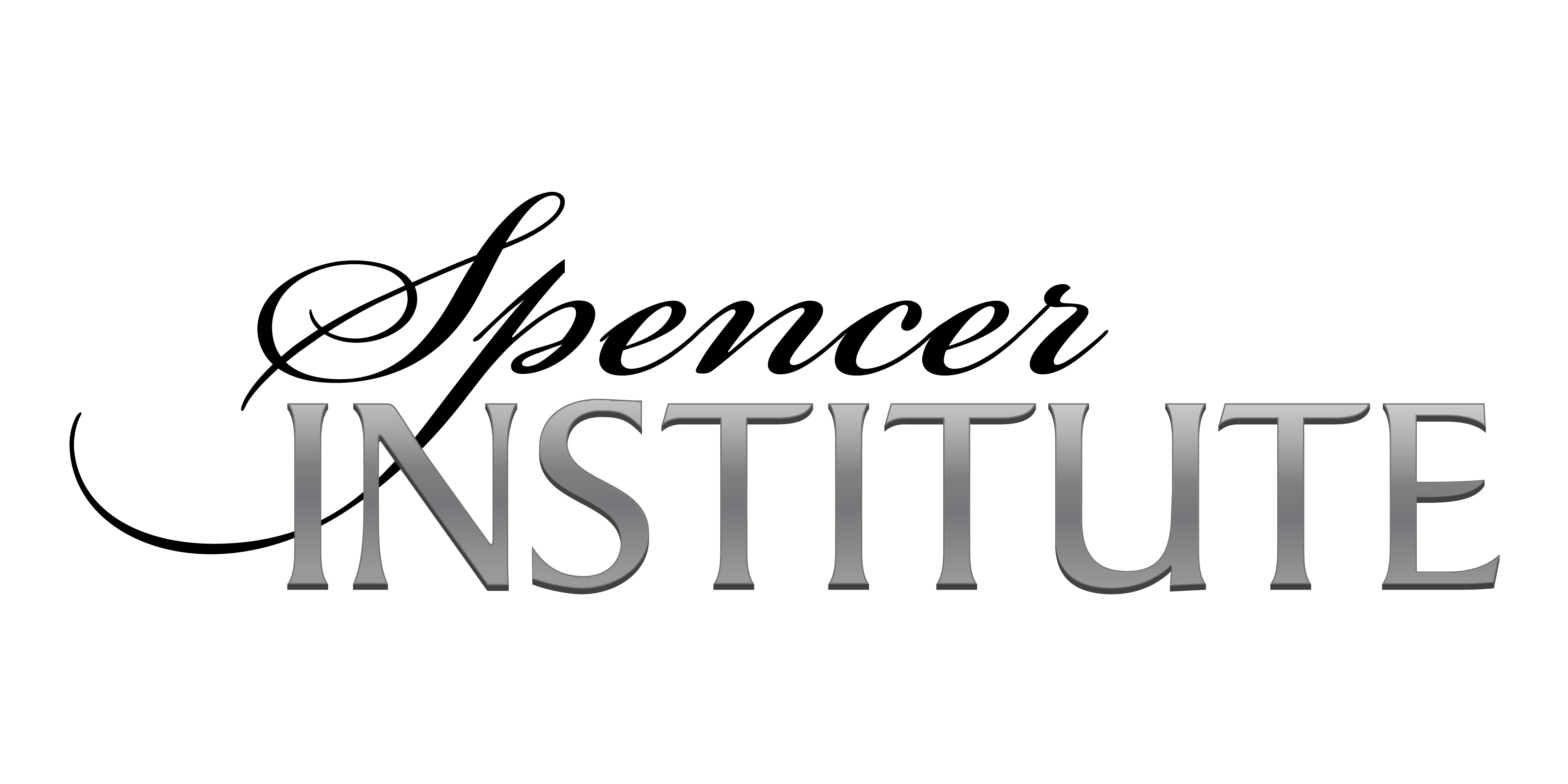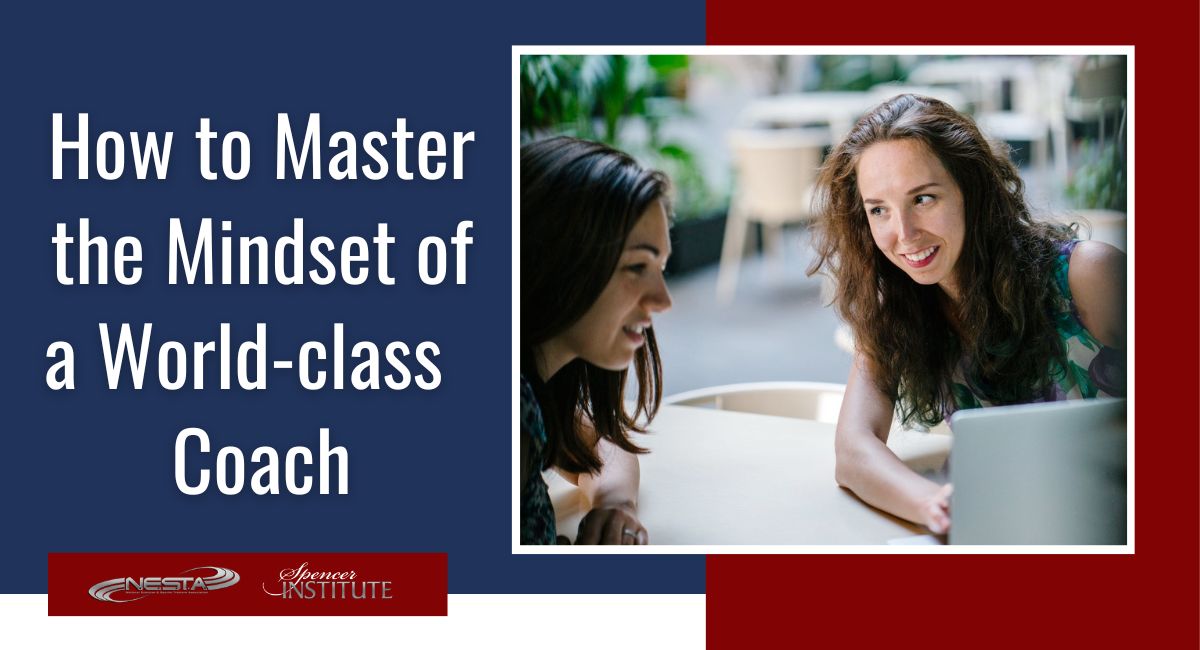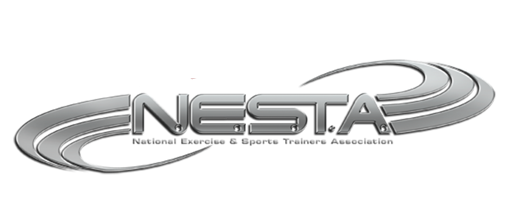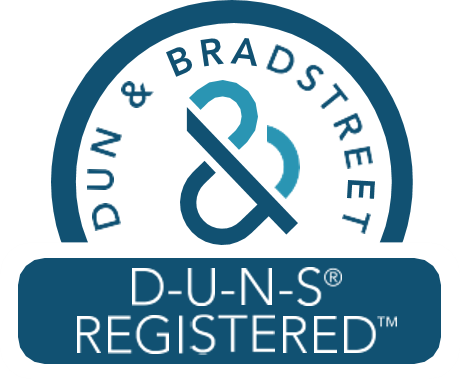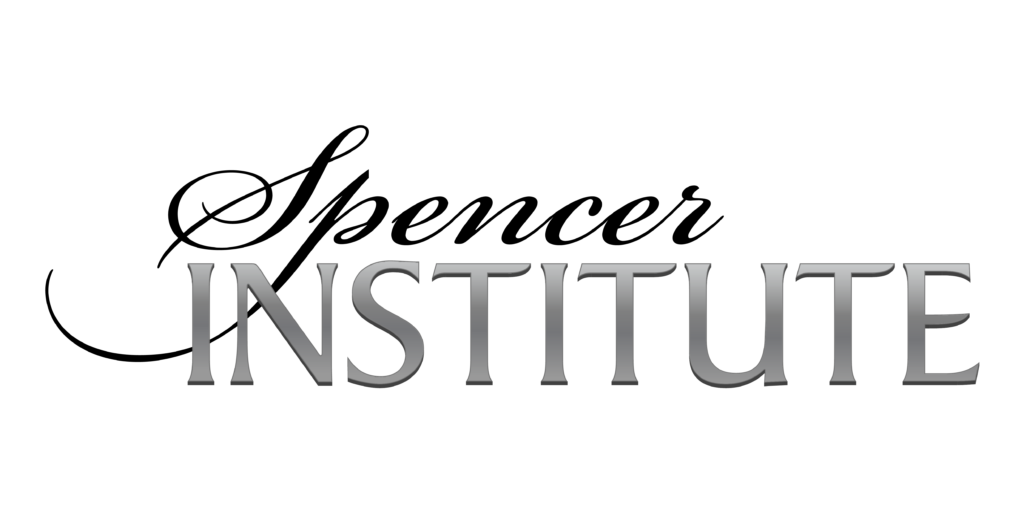Learn proven strategies to become a great coach!
For many coaches, these initial thoughts may be a review, yet an extremely relevant launch point for coaches of all levels. Sometimes, it can be a good idea to regroup and think about the foundations of coaching. What is even more important to know from the onset is – what really makes you a coach, and why do you want to take it to a master level?
One of the main objectives we want to reach is to get a good understanding of the core values of coaching. We want to re-power you to employ the right mindset or perspective of a Health and Wellness Coach, functioning at a master level.
This is important to understand due to how we bring our mindset and perspectives to the coaching scene, and it helps to build meaningful and very powerful interactions. Therefore, we must completely understand the core values of coaching. When we say core values, we’re referring to coach behaviors such as being skills. This is a long list and includes being mindful and an empathetic personality – or to grow this part of your personality, if you don’t have that mastered yet! So, in part, it’s the being skills that will make up a large part of our program in the beginning – how we behave, where we come from in our perspective and what we project to our clients.
What do the best coaches in the world have in common?
Another key objective is the mastery of what we will call doing skills. What kind of things do we do as coaches? We all know that we listen, we reflect a lot of what we hear. We want to use open-ended questions when we communicate. We do a lot of inquiring to fish for more information about our client – to figure out who they really are. Along the way, we’re making sure, through clarifications, that we’ve gotten it right. So, there are also some doing skills we’ll be learning about as we go along.
Throughout the Master Health and Wellness Coach Certification course we’ll be talking about a process. What’s the process or the platform that we coach on? What is the process of coaching? Coaching dynamics presented here are intended for the coach to use to guide a client through a process. One of the first tenets of coaching is that we want to help our clients to develop their best vision, their best self – and yet we also must uncover what it is that they want. Coaches have a natural tendency to want to help, facilitating problem-solving for our clients and boosting their self-efficacy. We can sometimes oversee helping grow a client’s confidence. We want to guide clients to get in touch with their abilities (strengths) and figure out what they can do already (what is working for them currently?).
What if resistance becomes part of the process? What do we do in our interactions that can either grow resistance or inhibit it? Maybe we can counter this by eliciting client strengths and thereby letting the client learn what strengths or assets they’ve already got or what they’re already doing well that can boost their confidence and self-efficacy. These are examples of process skills used in coaching.
The second half of this course is focused on learning specific coaching tools. As you approach an interaction, you can use what you’re learning – the application – by having a coaching tool or interviewing tool that you can employ to help your client.
All clients should begin their journey with an assessment session from the coach. During this time, the coach should be getting all the information they can about their clients. It could be to clarify how their health is affecting other areas of their life and how other areas of their life are affecting their health. This is also where the Holistic Life Coaching Certification is helpful.
Using a simple readiness exercise to help you determine your client’s stage of readiness, you then ask yourself “is this client really ready for change?” You will need to know where the client stands and what stage of readiness they are in, since many of our tools are stage specific. For instance, the decisional balance tool used in our Certified Wellness Coaching course is best when used in the contemplation stage.
With even just a few of our course objectives known, it’s clear that we have a lot to cover. Let’s continue by defining what coaching is…. and is not.
What is Coaching?
Coaching could be viewed as a method for creating an environment. This environment then should serve to make client discussions and interactions more powerful, allowing the client to move toward a positive outcome in the most rewarding way. Since these objectives frequently relate back to wellness, coaching frequently explores those ways to best help individuals in accomplishing higher levels of both physical and mental well-being. This is why we also have a “fitness focused” division for your education and career goals.
Even more, coaches must have the capacity to know how to create this sort of environment.
Coaches can be trained to use some very specific and unique methodologies or techniques with their clients. But this doesn’t resolve the need to create the right environment for a client A coach operating at a Master level can accomplish more by listening than by talking and even more by asking instead of telling. Coaching isn’t as much about prompting the client on the best way to take care of their wellness, but more about encouraging clients to find solutions for themselves so they can reach their desired outcome goals.
Furthermore, it’s not the job of a coach to analyze root causes for what the client brings to the co-active relationship. Yes, educating or even helping the client to analyze problems is part of what a coach will do but they are far from the main reason why people seek a coach.
Coaches should be viewed as collaborators and co-active partners with their client during their journeys to reach their visions, dreams, and goals.
Consider the current state of coaching and we see that coaches are now becoming distinguished in different areas of fields of expertise or specialty. Corporations and organizations will hire executive coaches or business coaches to improve job performance for their most elite and revered: executive employees. They also hire Certified Corporate Wellness Coaches for employee health and productivity enhancement. On an individual level, people have been able to retain the services of a life coach for several decades. These clients are usually looking for a coach to help them as they transition through something – be it life or even just their quality of life. Or perhaps you’ll encounter a client seeking help with time management or in developing a sense of purpose in their lives. There really isn’t a limit to the varied specialties that coaches can serve.
From there, things can become vague or a little convoluted. Life coaches mainly try to offer health or wellness coaching. Their philosophy is usually centered on bringing together the personal goals and values of the client by way of improvements to their well-being. This is different than a coach who might rely more on the use of motivation or by designing health promoting evidence-based mental and physical behaviors in the areas where are they are often seen as needed most or at a high level of priority. This includes nothing surprising: weight management and the management of all health risks or chronic disease, fitness, nutrition, stress management and overall life satisfaction.
So, in general, most coaches – be they wellness, health, and fitness coaches (personal trainers) – help the client to match up who the client is now with who they want to be at a point somewhere later in time. This implies the pivotal part of coaching – the steps needed for successful behavior change.
For the most part, our clients aren’t looking to become professional athletes or to undergo a massive change in their lifestyle. That is okay if that is what they want, of course. But the reality is that your client will realistically only want to reach far more basic goals. For example, clients want more energy. They want to get through their day without pain or the physical and emotional burdens that weigh them down. They may feel stressed out, and this might be evident in their sleep patterns as well. For clients who lack basic physical levels of health, the energy deficit you will observe can be significant.
But there is more. Coping with stress effectively and increasing life quality and satisfaction, a sense of purpose, gratitude and meaning join exercise and eating well as lifestyle medicine. Two-thirds of healthcare costs are driven by our daily choices, but knowing we should change is not enough. Only one in 20 adults engages in all the health behaviors known to prevent chronic disease. This includes regular exercise, healthy fat intake, at least five servings of fruits and vegetables daily, limited drinking, no smoking and maintaining ideal body weight.
So, what do we do about this as a profession?
Can we even make an impact? Yes! We can. And we start by coaching clients to peak wellness while seeking personal success and fulfillment at the same time.
At this point, it seems that our collective society is positioned to take control of its health and make better lifestyle choices. Think back to when smoking cessation was a topic of hot debate more than a decade ago – it is that same mindset now for many who are taking their well-being seriously. We don’t evolve or improve until we can learn some new life skills. We need to develop a personal wellness vision or plan and then have the confidence in our ability to implement it (self-efficacy). Most clients don’t believe that they can master this required life skill for a good (or better) quality life. The increasing numbers of those who choose bariatric surgery represent the face of our greatest doubts.
The health and fitness industry has been working hard to support our mission as coaches. We have a lot to feel positive about – there is a bona fide ‘wellness revolution’ underway and its success is being measured in long-lasting behavior changes. These modifications come about as the result of various dimensions coming together to support our client’s change efforts. Having moved past the constraints of the ‘expert approach’, newer coaching styles focus instead on assessing one’s readiness to change and fine-tuning coach intervention strategies for each client. Sometimes, the most successful coaches are those who can customize interventions and education to match the client’s stage of readiness.
The Expert Approach to Coaching
Let’s explore more on the Expert Approach. When we have a client with low self-esteem or low self-efficacy, how would reciting facts (expert style) help our client ponder making changes? It really won’t! We normally look to experts to tell us what to do but it could also be said that the Expert Approach absolves the client of their accountability by implying that the expert is in charge, not the client. Additionally, not all experts are trained to deliver effective advice and as a result, they end up working harder than the client on other parts of the coach-client relationship.
The expert approach might have its proper time and place. It is more important at those times when an acute or immediate health situation is present. It is less useful for the client who may simply want to lose weight, manage stress, develop a positive mindset, or increase their self-confidence.
When we act as the expert, we see that this comes with some concessions – the main one being that our client is not in control, and they aren’t asked to work to find their own questions and answers.
Good coaches work more to uncover strengths and to explore different opportunities with their client, not to provide expert advice. This allows the coach and client to focus and build upon what’s already working well in their lives. It also serves as a diversion away from the tendency to emphasize diagnosing and to try to “fix” for our client what we believe to be not working.
Using this approach is also believed by many “experts” to undermine self-confidence. You would most likely agree that it would be easier to face or make behavior changes while keeping focus on those areas of the client’s life that ARE working already instead of working a way through a diagnosis or cure (fix) strategy for our client. Tapping into the energy needed for behavior change is harder when energy is not of a positive nature or when emotions are overactive with doubts, self-confidence or self-efficacy concerns.
It would be great if we could all take a holistic perspective of health and well-being. Instead, we have a lot of specialists, usually from one field of expertise. This could be a personal trainer, an exercise science professional, a nutritionist or even a mental health provider – but without knowledge of all these fields, the coach will most likely be limited in how effective they are.
If we coached using influences from these different fields – or if these areas of emphasis could be woven together, only then can we truly say that we’re looking at our client holistically. You’ll notice that your client will need help putting together all the expert information they’ve received from multiple sources. This might be due to how some of the experts advising them can often contradict one another. Only once you move past that and sort through all of the advice, will you be able to start working on planning and prioritizing change efforts.
The Whole of Holistic Health
The truth is, we could easily swap the word “Health” in our credential to state “Holistic” instead.
We could say that wellness is the condition of being in optimum health. It is a holistic blend of physical, mental, and spiritual well-being — the result of consciously choosing to live a quality life. For some, the path of natural health and wellness is a life-long journey that usually rewards the health-conscious for their personal responsibility and commitment. Others may choose to use a coach to experience the benefits from having optimum health.
Using the term holistic emphasizes the importance of the whole and the interdependence of its parts. It is the recognition that what affects one part of our system affects the whole body. A holistic approach to health is multi-faceted and most often indicates a certain mindfulness of the consequences (good or bad) of our habits and actions.
And that just cracks the surface of good coaching. Beyond that there are other vital links that need to be explored and mastered. For instance, a connection to a sense or a belief in a higher purpose can enhance your coaching. For some this is their religion or faith; for others it is more of a broad-based spirituality. Time and research studies are showing us how important this is to be successful with profound and lasting behavior changes. This suggests that we might be more effective if we can link wellness, health, and fitness to what our client values most.
Finally, our profession would benefit from what the fitness industry has mastered – the fact that personalized plans for everyone can be goal-centered and yet still work within our client’s capabilities to make behavior changes long-lasting. In the realm of athletics, professional coaches have established their skills when helping athletes, sports teams and even executives to perform at their best. This is where sports psychology coaching can come in to help. Now, professional coaches are being tapped to assist clients in making lasting improvements in their wellness because it’s a logical fit – most holistic wellness relates to fitness and reaching optimal physical wellness supports emotional and spiritual wellness for the client.
Coaching for Confidence
What can a coach do to assist a client who needs a boost with self-efficacy? Much of this begins in the initial stages of assessing the client. Coaches will be most successful when they can fully accept their clients and be present for them. This will allow the coach to motivate the client to take charge of their wellness. Making sure every success for your client is identified and celebrated is important to boost self-esteem.
Coaching for mindfulness may help to build a client’s confidence, since it helps to support and define that higher purpose mentioned before. This is accomplished with the client through awareness of health and well-being (i.e. mindfulness).
We recommend that you address mental and physical health together as this will help the coach to map out a holistic version of a personal wellness, health, or fitness blueprint for the client. Using realistic goals and tapping into the clients strengths will be needed if even just for the small victories your client experiences. The benefit to the client is that identifying strengths will help to lay the foundation for a boost in self-efficacy.
When obstacles are present, clients need to harness their strengths to overcome these barriers. Some coaches may even be experienced enough to reframe obstacles to become opportunities for learning and change. With this co-active relationship you are building a more powerful team than if the client was working alone to change a behavior.
Fish for more information from your client! Try to uncover their actual natural impulses, especially noting those that indicate a desire to be well. Once that is identified, you can then begin to help your client to access their innate or true spirit, one that is related to their vision.
The thoughts and ideas we are presenting support the belief that coaches need some structure and yet some individual planning will always be necessary for each individual client. Coaches manage a lot – self-efficacy, personal responsibility, and a large dose of self-discovery. In an ideal setting, the client will create their own possibilities and find their own answers instead of being given answers or direction solely from their coach. When visions originate from the client, there is a much greater chance of success in fulfilling the vision, but success also comes from basic outcomes/plans and behaviors that are also originating from the client.
Co-active Equals Proactive
It can be difficult for some coaches to refrain from using the expert approach, and this is easily understandable. In most cases, these coaches may lack coach skills training and yet they have a lot of research and evidence to support their facts. But this alone implies that the client does not have the information they need already. That would be in error, as you will find most of your clients know a lot about wellness from their own life experiences or their research. So once again, it is time to take off the expert approach and shift into the co-active coach mode instead.
Some clients can be caught off-guard by this approach to coaching because they may have been conditioned to accept being told what to do rather than how to be repowered to take charge of their own wellness visions and then make any corresponding changes needed to reach them. In summary, it can be a challenge for some coaches and their clients to work within a new operational framework of this relationship. Once this paradigm shift is complete, transformations more easily follow thanks to strong foundations built into the relationship with your client.
Coaches engage their clients in ways that bring clarity to who their “best self” is and then ideally, work to create environments that support the client’s best self. For many clients, this requires that we help them to discover their true strengths, to increase their awareness, to meet their challenges and perhaps most importantly, to clarify their values. Knowing your clients values is very important since it will help to set client priorities and allow you to brainstorm possibilities and to design positive actions for your client. This coaching dynamic enables clients to generate a new self-concept and thus, define their best self.
Taking this dynamic one step further, good coaches encourage clients to take new actions to fully understand what manifests their best self. Repowering clients to find their own answers, through asking non-judgmental and probing questions – and offering powerful reflections – makes a coach far more effective as a catalyst for lasting change.
To transition from the expert to the co-active coach approach, you will find that your success lies in not making decisions too quickly and reserving judgment. This timing will help your client use the coaching opportunity to dig deeper for their own questions and answers. But when you can silence your inner-voice to a point where you are not thinking about what to say next, you will catch the client leaving a lot of thoughts unfinished – and this is another reason why you will want to be ready to help them make connections. That is why they are looking for a coach!
The best coaches learn to stay focused and on point when coaching a client rather than playing the expert. This requires that coaches patiently wait for the client to become interested in changing behaviors of their own will. But this requires that we go in search of the truth from the client. A coach will be reading client emotions, respecting them implicitly and them using these to anchor the client to their own ‘truths’. The “truths” could be their best self, or it could be what they really want.
The process cannot be rushed at this – or any stage, but it is important to be mindful of timing during the early stages of coaching. While staying focused on our client’s goal is vital – we must allow for some flexibility for clients and their timeframes and lifestyles.
These and many other shifts, described later, represent the practical side of coaching psychology that can assist people to successfully master their main health and wellness challenges.
How do you know when you’ve got things going in the right direction, or when you’re heading down the right road to coaching effectively? Let’s look at how letting the expert role run simultaneously with a co- active strategy can be modified to best serve the needs of clients.
Less is best would be a good phrase for coaches, with respect to educating and advising – so for this much of the equation we suggest letting expert advice run only in the background of your mind. It will always be important for the coach to intervene when clients do or plan things that will jeopardize their wellness goals but it’s also important to remember that coaches never provide advice on areas outside their field of expertise and training. There is no place for unprofessional coaches who work outside of their domain.
Is it coaching or is it therapy?
We’ve explained how coaching is different from using an expert approach, but it is also different when compared to conventional therapy. Therapy is usually targeted to treat disorders diagnosed by someone who can recognize mental health disorders.
Coaches are not involved in diagnosing and unless qualified, a coach should not work with a client who has been identified as having an actual clinical dysfunction. Coaching is most suited for people who can manage most parts of their lives pretty well, yet they may need a bit of direction or support with their initiative and drive to change something about their life or lifestyle.
The growing demand for coaching services suggests that clients also enjoy the coaching approach and see it as an effective modality for handling the common challenges of life. Then what drives a person to seek a coach?
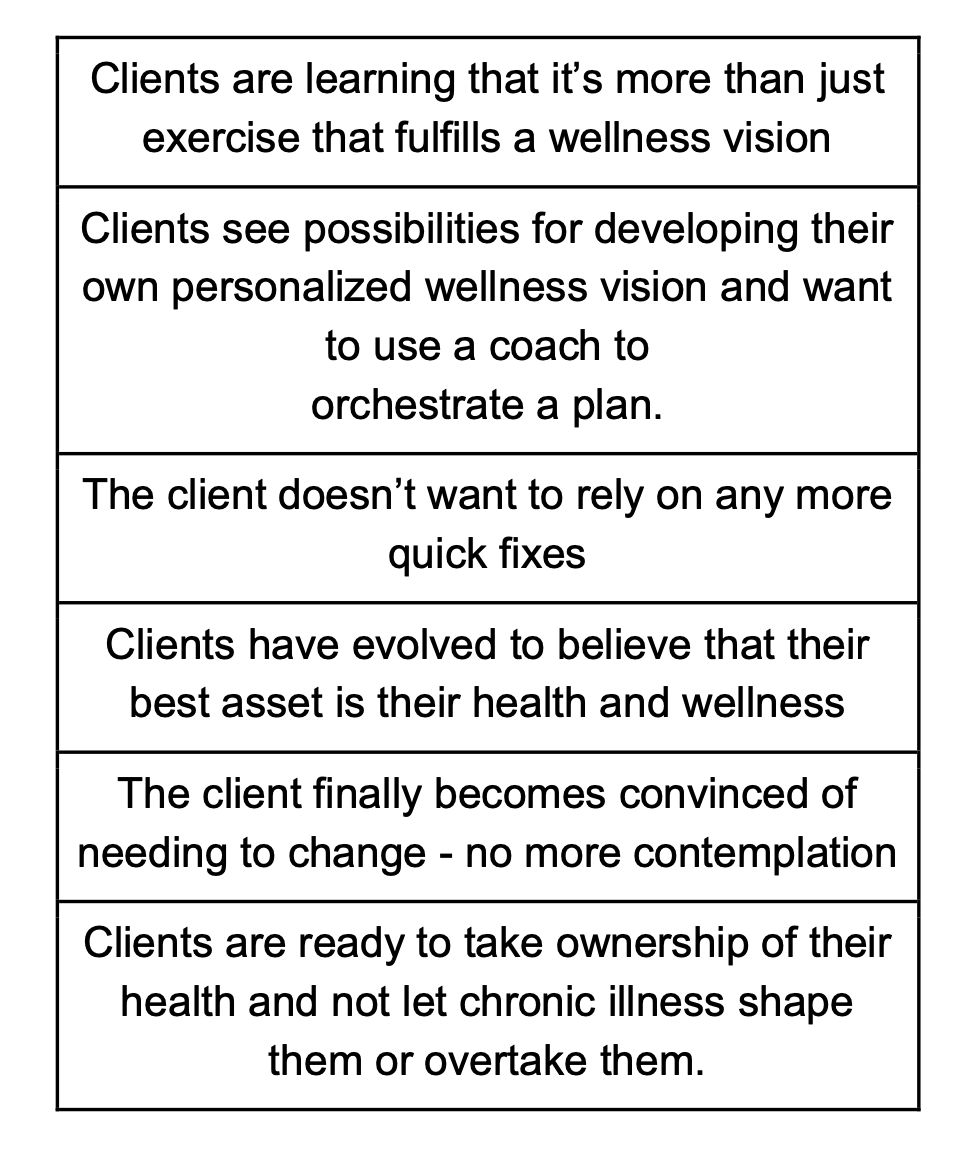
We’ve used the word client – since a Certified Master Health and Wellness Coach (CMHWC) could work or serve virtually anywhere – in clinical settings, one-on-one coaching (the most likely or common option) or even in corporate wellness sites. For the corporate coach, you may think of your entire site as the client and then within that infrastructure, you would coach employees and these interactions are also considered coaching “clients”.
The Coaching Presence
When we talk about a Coaching Presence, we are talking about the ability to be fully conscious and create a spontaneous relationship with our client. This could be accomplished by perfecting or employing a style that is open, flexible and confident.
Coaches will typically use humor to create lightness, levity, and energy. This can be vital as clients look to a coach to be confident. Working with strong emotions will require coaches to self-manage their own emotions and to not be overpowered or enmeshed by our client’s emotions
To take this further, we could say that a coaching presence is one where the coach Is present and flexible during the coaching process, adapting in the moment.
A good coaching presence is also made stronger when the coach can access their own intuitions and trust their inner-beliefs or knowledge and feel confident going with their instincts or intuitions.
Coaches are most successful when they can sensibly and realistically coach clients in a manner that is based on practical rather than theoretical considerations.
How does being this pragmatic benefit the coach? Better results for their client! Coaches become leaders who are interested in the practical aspects of application of coaching skills and furthermore, there is an understanding that the key to success lies with enhancing the lives of those they work with. This is what we mean by being pragmatic.
Mindfulness
As coaches, we cannot facilitate the development of mindfulness within our clients unless we, ourselves, become mindful. It is only in the practice of mindfulness that we can come to understand this part of the process and its effect on health, fitness, and well- ness. By being mindful in our everyday lives and showing up mindfully for our sessions with clients, we enable clients to learn, grow, and develop beyond what they might otherwise have imagined possible
Mindfulness becomes a vital skill or element for coaches who find that they need to control their own emotions during coaching interactions. If we’re able to understand what is going on within us, the less likely we are to allow our own feelings, events, opinions, and concerns to get in the way of our ability to be present in the moment.
If your client happens to trigger an emotional response for you as the coach, take note of these feelings and then set them aside. Remain focused on the client. The ability to examine those feelings later – away from the coaching session – is important to our development as coaches. Some suggestions for activating mindfulness in your coaching sessions include closing your eyes and taking deep breaths for a few seconds, or long enough to become aware of your breathing. Think to yourself “I am grateful for this opportunity to connect with my client and to make a difference and I have an opportunity to make an important contribution to my client. I am open to and curious about what will unfold”.
Empathy
Empathy could be considered a complete understanding of another person’s experience, and being respectful of their desires, feelings and needs. It is not just an element used in the work of coaching but instead it is a core of coaching. Through the respectful and appreciative understanding of our clients’ whole life, we can also help to develop their awareness, facilitate openness, and foster change.
Motivational Interviewing (MI, discussed later) builds upon the belief that change talk is brought on by a calm, safe, judgment-free environment and in this relational space, clients are free to be open and share their thoughts, feelings, desires and needs without fear of judgment, shame, or pressure. This is especially true when clients experience a seemingly insurmountable conflict between what they want and where they are currently. The more a client feels “stuck” and unable to move, the more important it is for coaches to express empathy and to appreciate the discomfort of being on a fence.
Empathy is not about feeling sorry for someone; it’s about understanding and respecting where your client is coming from. Empathy requires both an emotional and cognitive awareness to be able to fully appreciate a client’s whole life. If there is conflict with a client, confronting issues with empathy is often necessary to foster forward movement. However, this must be done with care and the skillful use of empathy and in a manner that steers clear of judgment. Empathy requires both complete immersion and considerable appreciation. Showing empathy requires a safe, calm, and judgment-free zone where people can discover and develop their real truths. Empathy is not to be confused with sympathy. Sympathy can be helpful at times, but since empathy requires treasuring emotions coming from the client as well, it can result in opening your client to experience significant new learning, growth, and change.
Warmth
Obligatory expressions of empathy just don’t work. Like- wise, without empathy, all attempts at warmth will fail. That’s because warmth requires an awareness of what others are feeling and needing in the present moment.
Warmth comes from what psychologists call “positive regard.” It has the power to open clients, just as sunshine has the power to open flowers. Too little or too much warmth, however, can distress clients, just as too little or too much sunshine can damage flowers. Warmth must be tailored appropriately for every situation. The key is to radiate just the right amount of warmth, in just the right way, so clients warm up and the coaching process becomes energized.
Warmth helps to create full engagement with your client. Warmth is a quality of being that breathes life to conversations, relationships, and situations. When people can warm up to each other, their energy increases and creative ideas come more easily and quickly. There is a correlating relationship between warmth and empathy. Without warmth, all attempts at empathy fail. That’s because empathy requires a sincere, heartfelt connection with another human being.
Coaches will, at times, must act as wellness directors, human maintenance supervisors, or even client visionaries. They must be genuine partners. Another important variable here worth mentioning is that coaches tend to yield to an understanding that is developed whereby the success of getting their client to a positive outcome goal is most often dependent upon the client being successful at what they accomplish and not as much in how great they are as a coach.
As such, coaching leaders seek to master the critical core aspects of coaching. As the pragmatic type, coaches are aware nothing is more important than how they listen to their client and how they view the clients as a ‘whole’ being. Coaches commonly use reflections, ask a lot of questions of the client, and then provide the appropriate feedback in the context of the coaching dialogue.
To be successful, coaches should try to master some core essentials. The first is to be curious about your client! So, when we say to listen with curiosity, we’re talking about showing a genuine interest in what our client is sharing with us.
This is of particular importance, value, and usefulness within the coaching dialogue. All too often we listen with impatience and a lack of attentiveness, which in turn hinders important dialogue from happening. Sometimes it is because we are focused on our next statement, argument or our own agenda. So, we want to be genuinely curious. This means that maybe you won’t do all the talking and keeping interruptions to a minimum. Pace the conversation, and don’t be afraid to keep it focused and on- point.
Coaches can learn to give off cues – such as body language or facial expression – to show your client the depth of your listening. But this alone is not active listening. During the discussions we have with our client, it’s important to stay focused on the main target – which is all of the important information coming from the client during your time of curiosity and fishing. Use this interaction time to contemplate what your client is saying to you. This is how we get a complete picture of the whole client and to better understand what their perspectives are.
In meaningful dialogue with your client, sometimes determining what is NOT being said is required and it’s implied that the coach will work to understand every word, observe each gesture, and then attempt to take in the client’s perspective. This includes their thoughts, ideas, and emotions as well. To take in what you hear, you may need pacing and leading to steer the conversation with your client.
Essentially, the best way for a coach to take in all that your client is – to look at them holistically – would be to understand them from within their own perspectives and envision how it would feel to be them. But this is very difficult for some coaches, especially if they have a completely opposite lifestyle than that of the client.
The art of asking questions is part of the rapport that we build during conversations with our client and questions allow for a deeper and more proactive dialogue. Asking open-ended questions is like an exploration into our client’s life. By asking powerful questions, you offer your client the chance to find their own answers. You find that this is often the case.
If you are asking the right questions during this time of discovery or fishing, you are also indirectly reinforcing some strengths or beliefs in your client’s mind. This could then help them to believe that they have strengths and a sense of confidence if they are already doing some things right in their life. It also speaks to how much you believe in them, and you are also demonstrating that their opinions, knowledge, and experience matter. You build their self-esteem and confidence.
Feedback is important for human development and coaching. It is considered a given or implied action. It is just one of functions that coaches “do”, so feedback is very much a “doing skill”. For the coach, being proficient at delivering feedback means understanding that it doesn’t always have to – nor should it be – critical in nature. Great coaches are careful and extremely particular about how they coach using feedback, and this is due to knowing that poor or incomplete feedback can negatively impact clients. It can also cause the client to have feelings of inadequacy.
Some coaches are quick to make the mistake of using feedback as a vehicle to share their expertise – but we know that using the expert approach doesn’t serve our interests too well. Being unclear or vague is another concern. There is no place for arrogance or dismissive feedback in a coactive coaching relationship. Acting in this style can make clients defensive and can potentially ruin the trust between the coach and client.
Coaches have to provide feedback that is both clear and concise. Feedback also needs to be relevant and helpful. If you can remain objective and positive with your clients, they will be less likely to feel as though they are being evaluated or assessed for something therapeutic or clinical.
You can easily build trust in the coaching relationship if you listen, reflect, question, and provide the right feedback.
Doing Skills
We must learn to be more mindful of what we refer to as our doing skills. What kind of things do we do as coaches? Up to this point we know that we do a lot of listening and we reflect a lot of what we hear. We want to communicate using open-ended questions. We search for the foundation of what our client is and we use inquiry for powerful and meaningful questions. We do a lot of inquiring and making sure through clarifications that we’ve gotten it right. These, and many other doing skills will be emphasized as we continue to move along in this training.
Summary
One of our goals is to master the processes used in coaching. These processes are built on a coaching platform. What are the processes involved in coaching? These processes are actions that we take our client through as non-negotiables. These include helping our client to find their best vision and/or what it is that they want.
As coaches, we inherently want to help, so we work with our clients on their goals, and defining their desired outcomes. We’re in the trenches of helping our clients with their problem-solving, or more precisely facilitating problem-solving for our clients – so another action we “do” is to help boost our client’s self-efficacy and confidence toward the goal of problem solving.
We might need to work with our clients to help them get in touch with their own natural abilities and strengths, so they are able to envision what they can do. This requires that we elicit their values and beliefs.
Certified Master Health and Wellness Coaches say that they are a master of all aspects of health and wellness. We each have our own set of strengths and weaknesses as coaches.
From the perspective of a client, wellness involves family, relationships, recreation time, stress management, fulfillment, personal growth, positive physician relationships, progress on health measures and spiritual growth. Wellness is multi-dimensional and very personal. Everyone’s definition of wellness is a little different. What is wellness? To use the term openly almost makes wellness too broad of a concept. With that in mind, no coach could strengths and then help them see what they’ve already got that can work for them.
In upcoming lessons, we will learn some very specific coaching tools, such as handling resistance as part of our coaching process. What do we do in our interactions that can either grow resistance or inhibit resistance? These are some of the process skills that make good coaches great.
Think of how much more effective you could be as a coach if you approach your interactions knowing actual coaching tools or interviewing tools that you can employ to serve your clients. For example, you may be more effective if your client comes to realize that their health is affecting other areas of their life and how other areas of their life are affecting their health. Using a simple readiness exercise – another coaching tool – is helpful in allowing you to assess where the client is relative to making a behavior change. Once you know your client’s stage of readiness, you will have specific coaching actions related to a given stage to use with them.
Some being skills can be used right away by coaches. Mindfulness and being present in the moment is easy. Showing warmth and empathy may take a little more work but with some practice, these being skills can be improved.
After learning of the importance of mindfulness, doing skills and being skills, try coaching clients while being mindful of your coaching presence. What are some observations you have of your coaching interactions now that you are more aware of your being skills?
Are you more mindful? Did you have any challenges in activating your empathy? Were you able to show warmth – this is easily done by complimenting people, and this in itself is a basis of Appreciative Inquiry.
There is obviously more to this topic. These skills apply to most, if not all, coaching niches, with some variations.
Learn which coaching certification course is best for your wants and desires.

